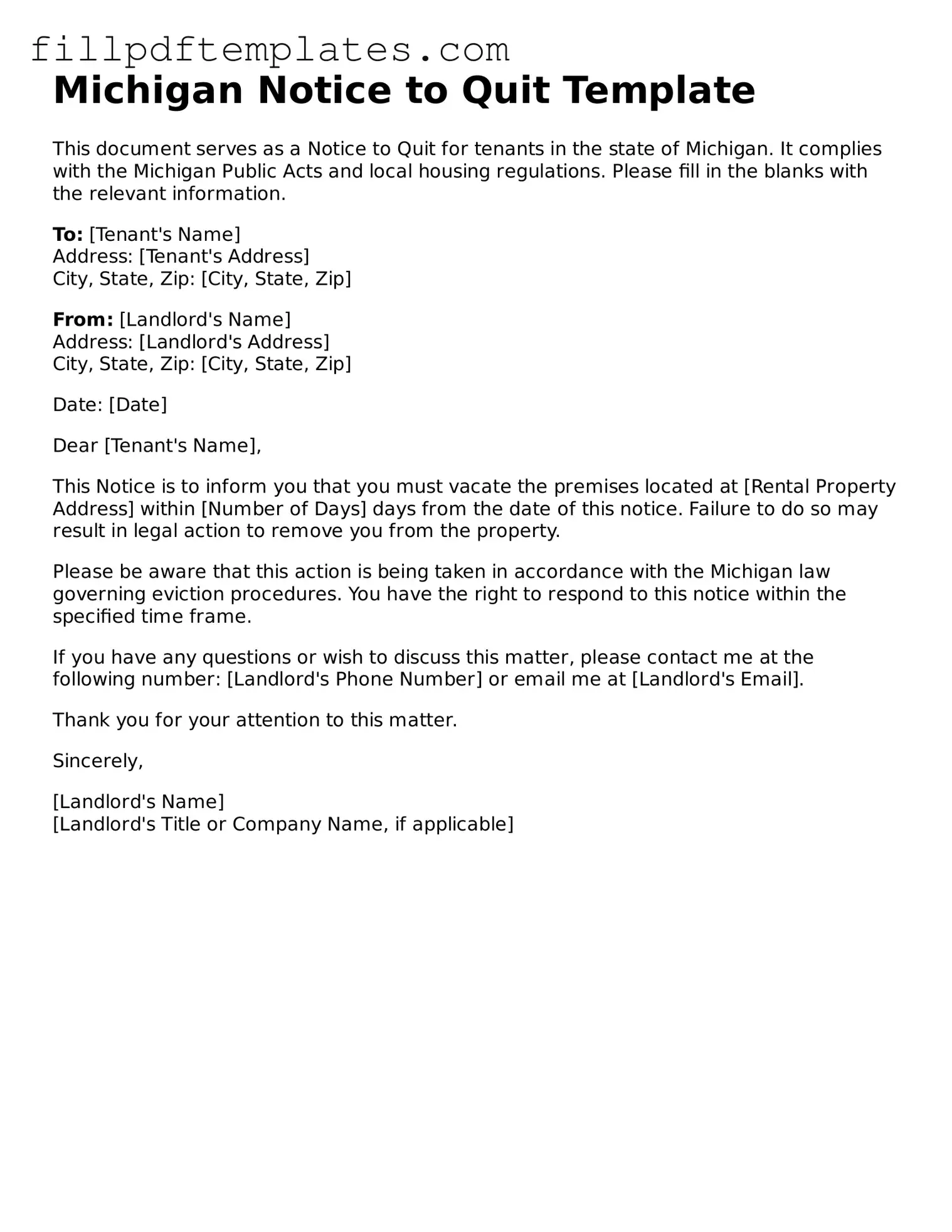Michigan Notice to Quit Template
This document serves as a Notice to Quit for tenants in the state of Michigan. It complies with the Michigan Public Acts and local housing regulations. Please fill in the blanks with the relevant information.
To: [Tenant's Name]
Address: [Tenant's Address]
City, State, Zip: [City, State, Zip]
From: [Landlord's Name]
Address: [Landlord's Address]
City, State, Zip: [City, State, Zip]
Date: [Date]
Dear [Tenant's Name],
This Notice is to inform you that you must vacate the premises located at [Rental Property Address] within [Number of Days] days from the date of this notice. Failure to do so may result in legal action to remove you from the property.
Please be aware that this action is being taken in accordance with the Michigan law governing eviction procedures. You have the right to respond to this notice within the specified time frame.
If you have any questions or wish to discuss this matter, please contact me at the following number: [Landlord's Phone Number] or email me at [Landlord's Email].
Thank you for your attention to this matter.
Sincerely,
[Landlord's Name]
[Landlord's Title or Company Name, if applicable]
